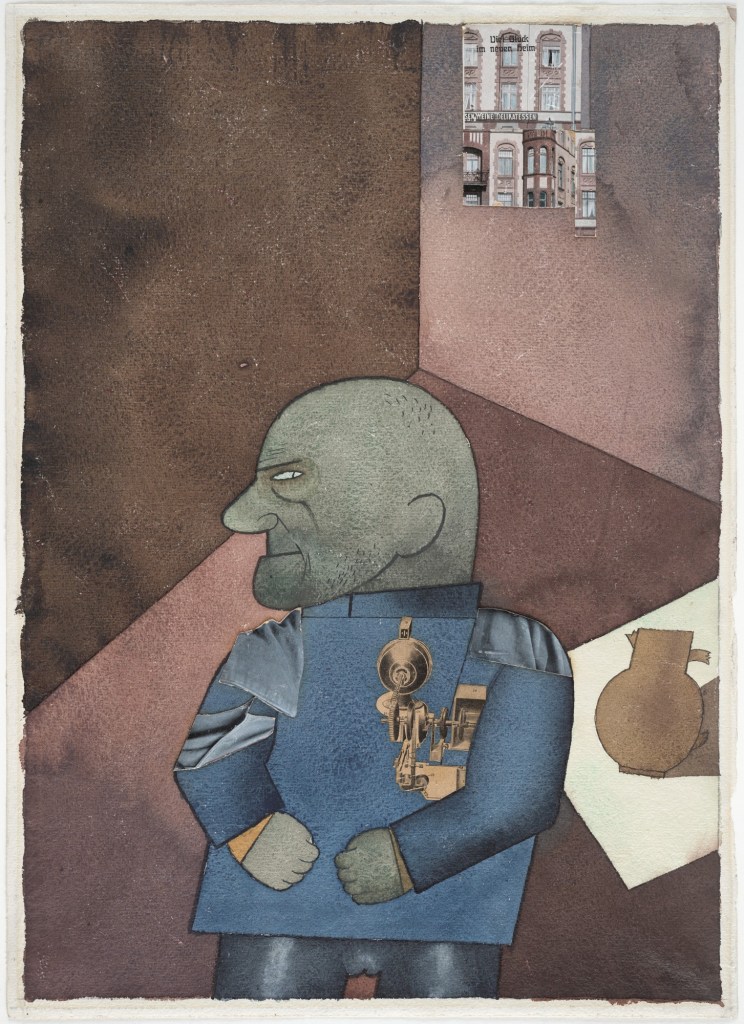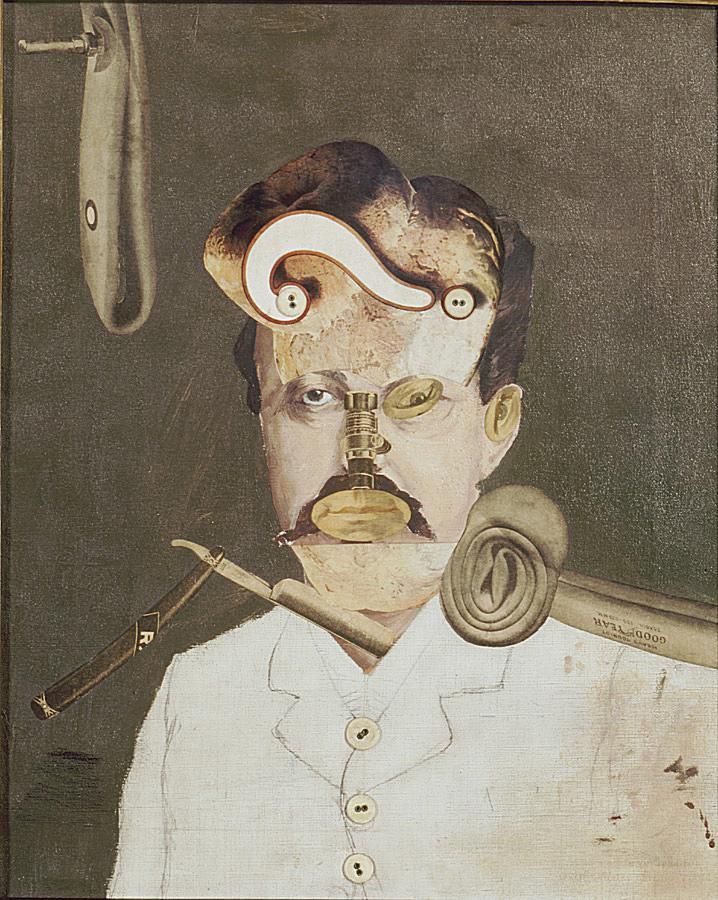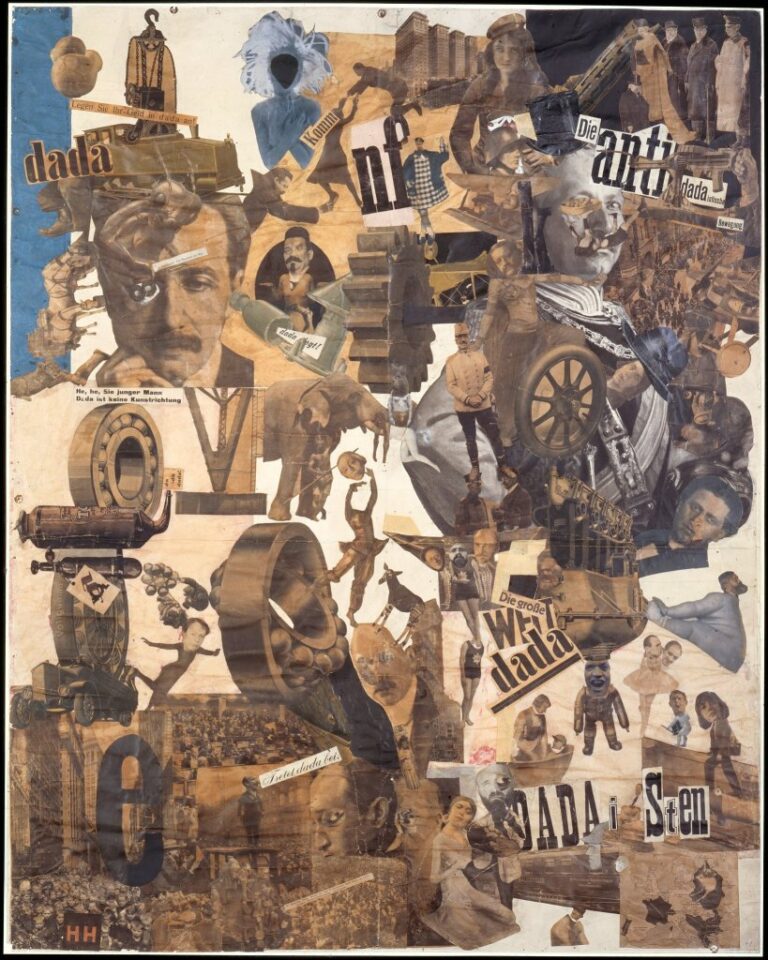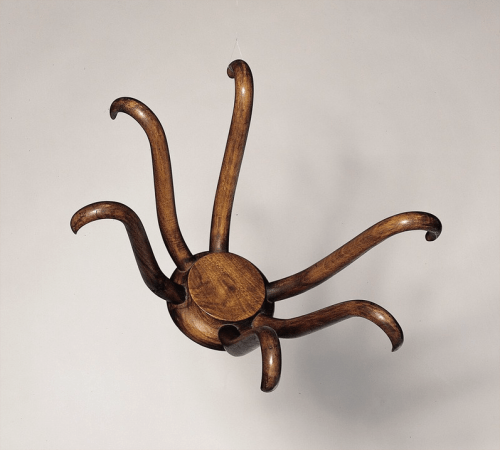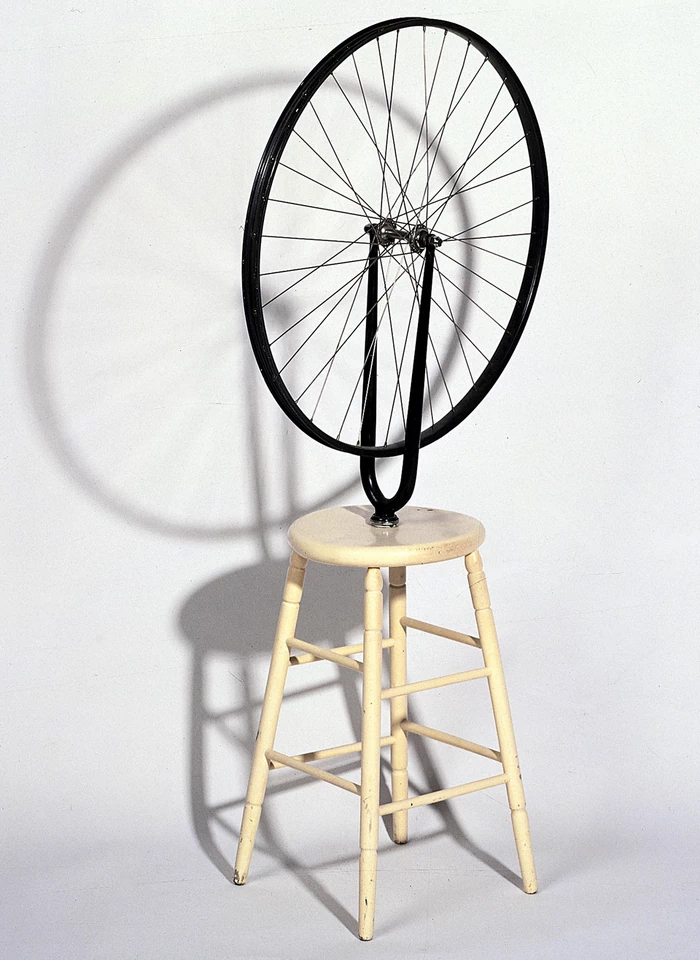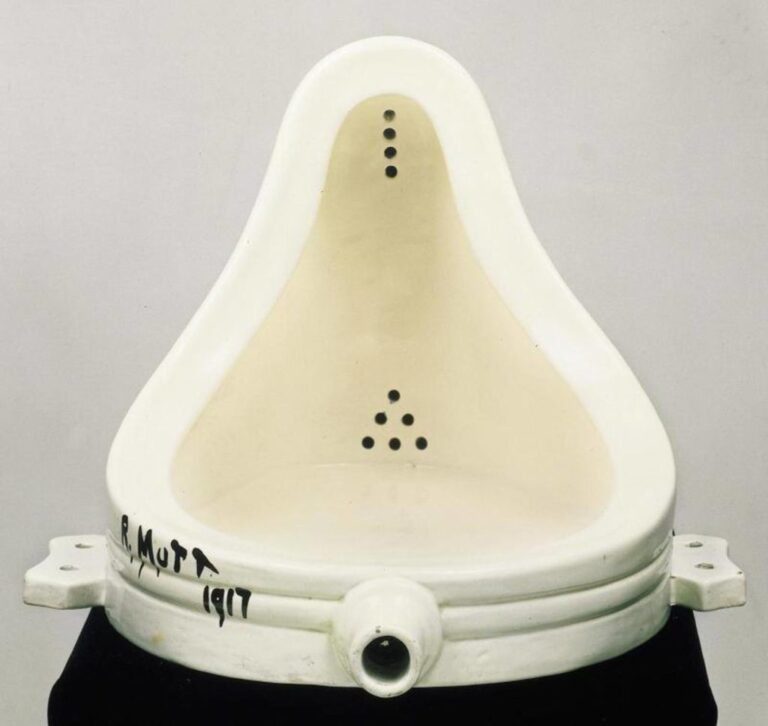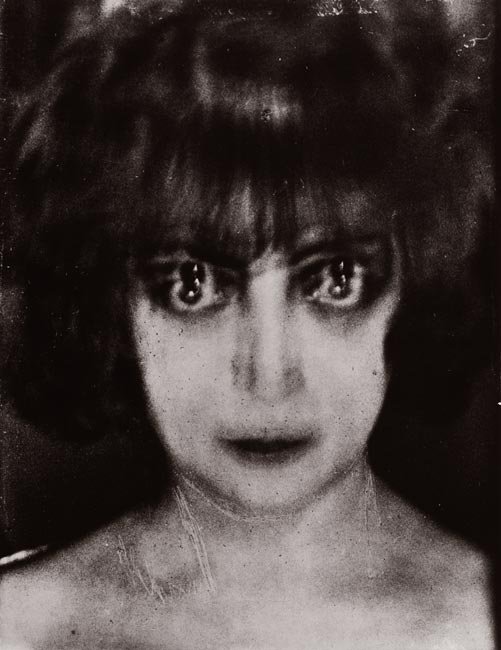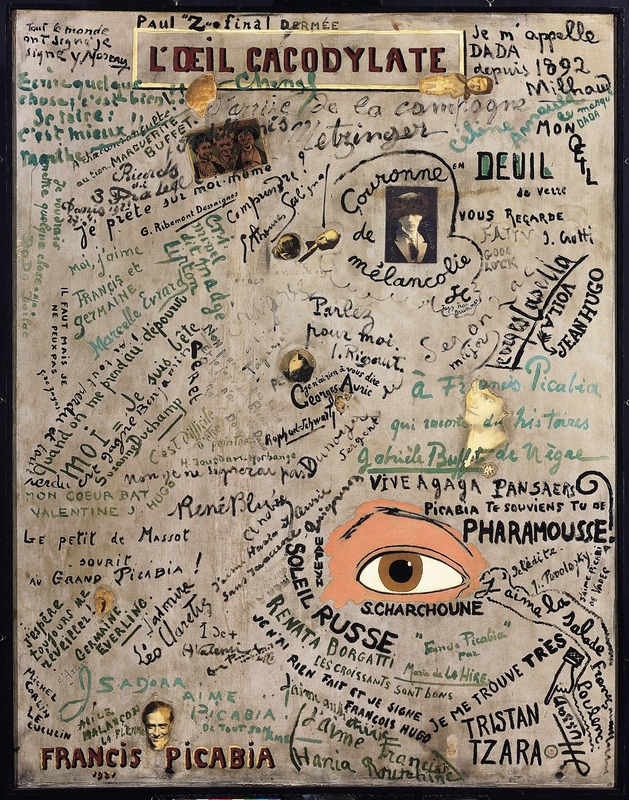Art has always been a reflection of society, expressing the thoughts, emotions, and experiences of its creators. Throughout history, different movements have emerged, challenging traditional notions of art and pushing the boundaries of creativity. One such avant-garde movement that emerged in the early 20th century was Dadaism, an artistic response to the chaos and disillusionment brought about by World War I.
Dada art was anything but conventional. It defied the norms of artistic expression, breaking away from traditional techniques and embracing a sense of absurdity and randomness. This movement, with its rebellious spirit and unconventional approach, sought to dismantle traditional values, challenge societal norms, and provoke thought and reflection. Unveiling the characteristics of Dada art allows us to explore the unique nature of this movement and understand how it revolutionized the art world.
At its core, Dadaism rejected the idea of art as a medium for beauty, refinement, and aesthetic pleasure. Instead, it embraced a revolutionary approach that blurred the lines between art and life. The artists associated with Dadaism sought to challenge and disrupt existing artistic conventions, embracing a sense of freedom and spontaneity in their creative process. They believed that art could be found in everyday objects and actions, going beyond the traditional mediums of painting and sculpture.
One of the key characteristics of Dada art was its emphasis on the absurd and irrational. Dadaists believed in the power of randomness and chaos to challenge the status quo. They incorporated nonsensical elements, unconventional materials, and unconventional techniques in their artworks. Everyday objects such as bicycle wheels, urinals, and found objects were repurposed and presented as art. The aim was to provoke the viewer, to disrupt their expectations, and force them to question the very nature of art and its role in society.
Dada artists also embraced the concept of anti-art. They rejected the idea of art as a commodity, transcending the boundaries of traditional art forms. They challenged the established art institutions, mocking the pretentiousness and exclusivity associated with the art world. Dada artworks often included elements of performance and happenings, blurring the lines between artist and audience. These live events were intended to shock and provoke, challenging the expectations of the viewer and questioning the very purpose of art.
Another characteristic of Dada art was its political and social commentary. In the aftermath of World War I, Dadaists were deeply disillusioned by the destruction and loss of life they witnessed. They used their art as a means of critiquing the political and social systems that had led to the war. Dadaists were anti-establishment, rejecting the nationalist and capitalist ideologies that dominated society at the time. Through their artworks, they sought to challenge the notion of authority and expose the hypocrisy and corruption of those in power.
Furthermore, Dada art embraced chance and spontaneity. Dadaists believed in the power of the subconscious and the irrational. They sought to tap into the unconscious mind through automatic drawing and writing, allowing the creative process to guide them. The emphasis on chance and randomness was a rejection of traditional notions of artistic skill and technique. It was a radical departure from the meticulously planned and executed artworks of the past.
In conclusion, Dada art is a testament to the power of rebellion and non-conformity. Its characteristics of absurdity, anti-art, social commentary, and emphasis on chance and randomness challenged traditional notions of art and opened up new possibilities for artistic expression. Dadaism may have been a short-lived movement, but its impact on the art world was profound. By unveiling the characteristics of Dada art, we gain a deeper understanding of its revolutionary nature and its lasting influence on the artistic landscape.
Origins of Dada Art
Dada art emerged in the early 20th century as a direct response to the social and cultural upheaval brought about by World War I. The movement originated in the European cities of Zurich, Berlin, and New York, and quickly spread across the globe, leaving a lasting impact on the art world.
Historical Context
At the height of World War I, Europe was engulfed in a state of chaos and destruction. Artists and intellectuals were disillusioned by the war’s devastation and questioned the values and institutions that had led to such a catastrophic conflict. It was within this atmosphere of disillusionment and discontent that Dadaism was born.
Zurich, the Birthplace of Dada
Zurich, Switzerland, became the epicenter of the Dada movement. In 1916, a group of artists, poets, and performers, including Hugo Ball, Tristan Tzara, and Emmy Hennings, founded the Cabaret Voltaire. This avant-garde nightclub became the gathering place for artists seeking to challenge conventional artistic and societal norms.
The artists associated with the Cabaret Voltaire rejected traditional artistic techniques and instead embraced experimental forms of expression. They sought to dismantle established values, beliefs, and modes of communication through absurd and nonsensical acts, performances, and artworks.
Berlin and New York, Dada’s Global Reach
Dada’s influence soon spread beyond Zurich, reaching the vibrant art scene in Berlin. Artists like George Grosz, Hannah Höch, and Kurt Schwitters embraced Dada principles and incorporated them into their works. Berlin Dadaists used photomontage and collage techniques to critique social and political issues, often employing biting satire and dark humor.
Similarly, Dada made its way to New York City in the early 1910s and had a profound impact on American art. Artists such as Marcel Duchamp and Man Ray played pivotal roles in introducing Dada ideas and aesthetics to the American art scene. Duchamp’s readymades, everyday objects elevated to the status of art, challenged the notion of art’s intrinsic value and authenticity.
Dada’s Legacy
Dada art’s influence extended beyond its immediate time and place. It paved the way for subsequent art movements, such as Surrealism, Pop Art, Fluxus, and Performance art. The nihilistic and anarchistic spirit of Dadaism, coupled with its rejection of traditional art forms, opened new possibilities for artistic experimentation and disruption.
Dada’s legacy continues to inspire contemporary artists to question norms, challenge hierarchies, and embrace unconventional forms of expression. Its rebellious spirit and rejection of the status quo make Dadaism a vital and enduring force in the art world.
Anarchy and Disruption
One of the central characteristics of Dada art is its embrace of anarchy and disruption. Inspired by the chaos and disillusionment of World War I, Dada artists sought to challenge traditional norms and reject existing societal structures. They believed that the conventional institutions and values of their time had failed society, leading to the devastation and destruction of war.
Dada artists sought to disrupt and dismantle these societal constructs through their artworks. They believed that by challenging established norms and conventions, they could expose the absurdity of the world around them. Dadaists embraced randomness, chance, and irrationality as tools for creating art that defied logic and reason.
The use of humor and satire was also a prevalent aspect of Dada art. Artists employed parody and mockery to mock authority figures, institutions, and societal conventions. They aimed to provoke viewers and challenge their notions of what art should be. Dadaists believed that by subverting and ridiculing the prevailing cultural ideals, they could encourage a more critical and questioning approach to society.
Dada art often incorporated found objects and materials, further emphasizing the concept of disruption. Artists would use everyday objects, such as urinals, bicycle wheels, or even refuse, in their artworks. By incorporating these ordinary, often discarded objects into their art, Dadaists challenged the notion of what constituted art and questioned the value placed on traditional artistic materials.
The Dada movement also embraced performance art as a means of disrupting conventions. Dada performances, known as “happenings,” were often chaotic and featured spontaneous actions, nonsensical dialogue, and absurd costumes. These performances aimed to shock and provoke audiences, pushing them to question the boundaries of art and traditional forms of expression.
The concept of “anti-art” was central to Dadaism. Dada artists rejected the notion of art as a form of beauty or visual pleasure. Instead, they embraced the idea of art as a means of challenging and subverting the status quo. This rejection of traditional artistic values and the celebration of anarchy and disruption set Dada art apart from more conventional art movements of the time.
In conclusion, the characteristic of anarchy and disruption was central to Dada art. Dada artists aimed to challenge societal norms, disrupt traditional artistic conventions, and provoke viewers through their unconventional and often absurd artworks. By embracing humor, satire, randomness, and performance, Dadaism sought to inspire a critical and questioning approach to the world and the prevailing cultural ideals of the time.
Exploring Absurdity
One of the most distinctive characteristics of Dada art is its exploration of absurdity. Dada artists sought to challenge traditional notions of art and society by embracing irrationality, nonsense, and the absurd. This rejection of rationality and logic was a direct response to the chaos and absurdity of World War I, which had a profound impact on the Dada movement.
Dada artists often used humor, irony, and satire to create artworks that defied conventional expectations. They aimed to shock and provoke viewers, pushing them to question the very foundations of art and society. Through their unconventional approach, Dada artists sought to dismantle established norms and challenge the status quo.
Absurdity in Dada art can be seen in various forms. One of the primary ways Dada artists embraced absurdity was through the use of found objects or readymades. These were everyday objects that were removed from their usual contexts and presented as artworks. By elevating these ordinary objects into the realm of art, Dada artists undermined the traditional notions of aesthetic value and questioned the distinction between art and non-art.
Another way Dada artists explored absurdity was through collage and photomontage techniques. They would combine unrelated images and objects, creating unexpected and nonsensical combinations. The resulting artworks were often chaotic and fragmented, challenging the viewer’s ability to make sense of the world.
The use of nonsensical or meaningless language was another tool employed by Dada artists to explore absurdity. They would experiment with wordplay, puns, and poetic techniques that deliberately disrupted the normal flow of language. Through these linguistic disruptions, Dada artists aimed to undermine the authority of language and challenge the idea of clear communication.
The exploration of absurdity in Dada art extended to performances and public interventions. Dadaists often staged provocative and nonsensical performances that mocked social conventions and cultural norms. These performances were meant to shock and confuse the audience, forcing them to confront the absurdity of their own existence.
In summary, the exploration of absurdity is a defining characteristic of Dada art. Dada artists challenged traditional notions of art and society by embracing irrationality, nonsense, and the absurd. Through the use of found objects, collage techniques, nonsensical language, and performances, Dada artists sought to provoke and disrupt, challenging viewers to question the established norms and embrace the absurdity of the world around them.
Challenging the Status Quo
Dada art emerged in the early 20th century as a radical response to the conventional and predictable art movements of the time. Dadaists sought to challenge the status quo by rejecting traditional artistic norms and embracing unconventional forms of expression.
- Rejection of Traditional Aesthetics Dada artists boldly rejected the notion that art should adhere to aesthetic principles or reflect beauty. They embraced anti-art, creating works that deliberately defied traditional notions of aesthetics, often using absurd and nonsensical elements. By refusing to conform to traditional standards of beauty, Dada artists aimed to shock and provoke the viewer, challenging their preconceived notions of what art should be.
- Critique of Social and Political Systems Dada art was not simply a rebellion against established artistic conventions; it also aimed to critique social and political systems of the time. Dadaists were highly critical of the societal structures that they believed had led to the devastation of World War I. Through their art, they sought to expose the hypocrisy and irrationality of these systems, often employing satire and irony to make their point.
- Embracing Chance and Accident Dadaists embraced chance and accident as integral elements of their artistic process. They believed that by relinquishing control and allowing random elements to influence their artwork, they could challenge the notion of artistic mastery and originality. Dada artists utilized techniques such as collage, assemblage, and photomontage, employing found objects and images to create compositions that defied traditional artistic techniques.
- Performance and Provocation Dada art was not limited to traditional artistic mediums; it often spilled into performance and provocative public actions. Dadaists organized exhibitions, performances, and public demonstrations that aimed to confront and disrupt societal norms. These events were characterized by chaos, humor, and the rejection of conventional behavior, challenging the audience’s understanding of art and creating a sense of unease and confusion.
- International Movement Dada art was a truly international movement, with groups and individuals emerging in cities such as Zurich, Berlin, New York, and Paris. This international connectivity allowed Dadaists to share ideas and collaborate across borders, contributing to the movement’s overall impact and reach. The transnational nature of Dada art further challenged the established art world hierarchy, breaking down barriers and fostering a sense of artistic unity.
In conclusion, Dada art was a movement that sought to challenge the status quo in both artistic and societal realms. By rejecting traditional aesthetics, critiquing social and political systems, embracing chance and accident, engaging in performance and provocation, and fostering international connectivity, Dadaists aimed to disrupt established norms and provoke a reevaluation of the role of art in society. Dada art continues to be influential today, leaving a lasting legacy of artistic experimentation and defiance of convention.
Impact and Legacy of Dada Art
Dada art, with its radical and unconventional approach, left a lasting impact on the art world and continues to influence contemporary artists today. This movement, born out of a response to the devastation and disillusionment caused by World War I, challenged traditional artistic norms and sought to break down conventional boundaries.
1. Challenging the Status Quo
Dada art had a profound impact on the art world by challenging established norms and standards. Rejecting traditional artistic techniques and materials, Dada artists embraced unconventional mediums such as collage, assemblage, and found objects. By incorporating everyday objects into their artwork, they challenged the notion of what could be considered art.
Dada artists also rejected the idea of the artist as a solitary genius and emphasized collective collaboration. They organized exhibitions, performances, and gatherings where artists, writers, poets, and musicians could come together to challenge artistic conventions and explore new creative possibilities.
2. Progenitor of Performance Art
Dada art played a significant role in paving the way for performance art. With its emphasis on experimental and participatory experiences, Dada performances blurred the boundaries between art and life. Artists like Hugo Ball, Tristan Tzara, and Marcel Duchamp incorporated elements of theater, music, poetry, and absurdity in their performances, challenging the passive nature of traditional art forms.
The legacy of Dada’s performance art can be seen in the works of later artists such as the Fluxus movement, which embraced similar principles of audience participation and challenging artistic conventions. Dada’s influence in performance art can also be observed in contemporary works that push boundaries and invite the viewer to actively engage with the art.
3. Influence on Surrealism and Pop Art
Dada art had a direct influence on the development of Surrealism and Pop Art, two major movements that emerged in the aftermath of Dada. Surrealism, led by artists like Salvador Dalí and André Breton, embraced the irrational and subconscious, influenced by Dada’s rejection of reason and logic.
Pop Art, on the other hand, drew inspiration from Dada’s use of found objects and everyday imagery. Artists like Andy Warhol and Roy Lichtenstein incorporated elements of popular culture into their art, reflecting Dada’s subversion of traditional artistic hierarchies and their use of mass-produced materials.
4. Dada’s Enduring Relevance
Despite its relatively short-lived existence, Dada art continues to resonate with contemporary artists and audiences. Its rejection of artistic conventions, emphasis on provocation and social criticism, and focus on the power of the collective have remained relevant and influential.
Dada’s legacy can be seen in the works of artists who challenge traditional boundaries, experiment with unconventional materials, and use art as a medium for social and political commentary. Its spirit of rebellion and disruption continues to inspire artists to push the limits of creativity and challenge established norms.
In conclusion, the impact and legacy of Dada art reverberate throughout the art world. By challenging the status quo, pioneering performance art, influencing Surrealism and Pop Art, and maintaining enduring relevance, Dada has left an indelible mark on the artistic landscape and continues to inspire artists to think outside the box and embrace the unconventional.

